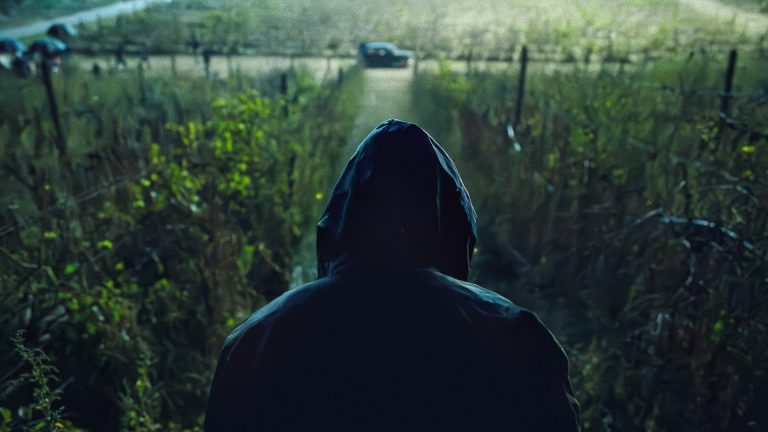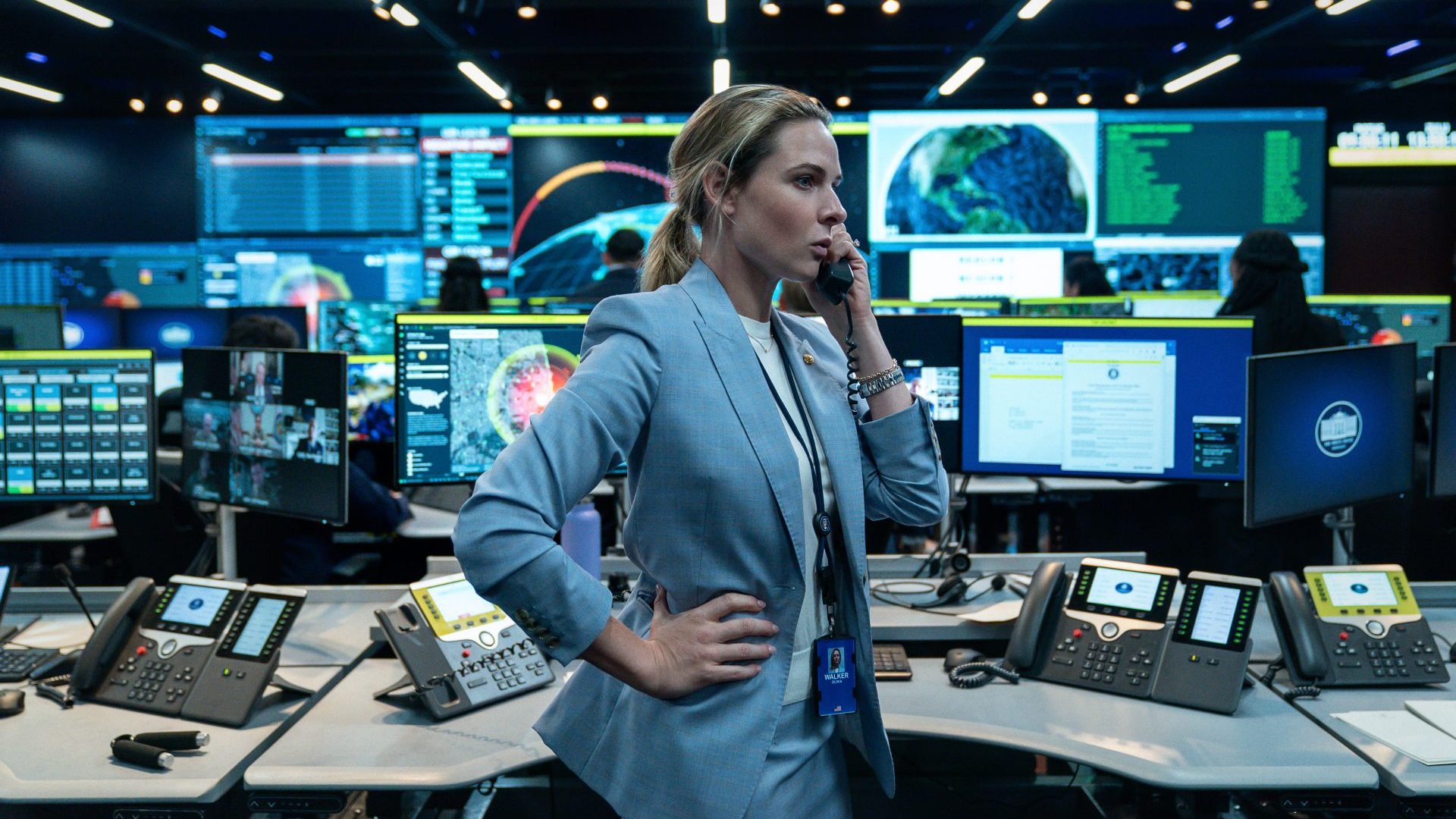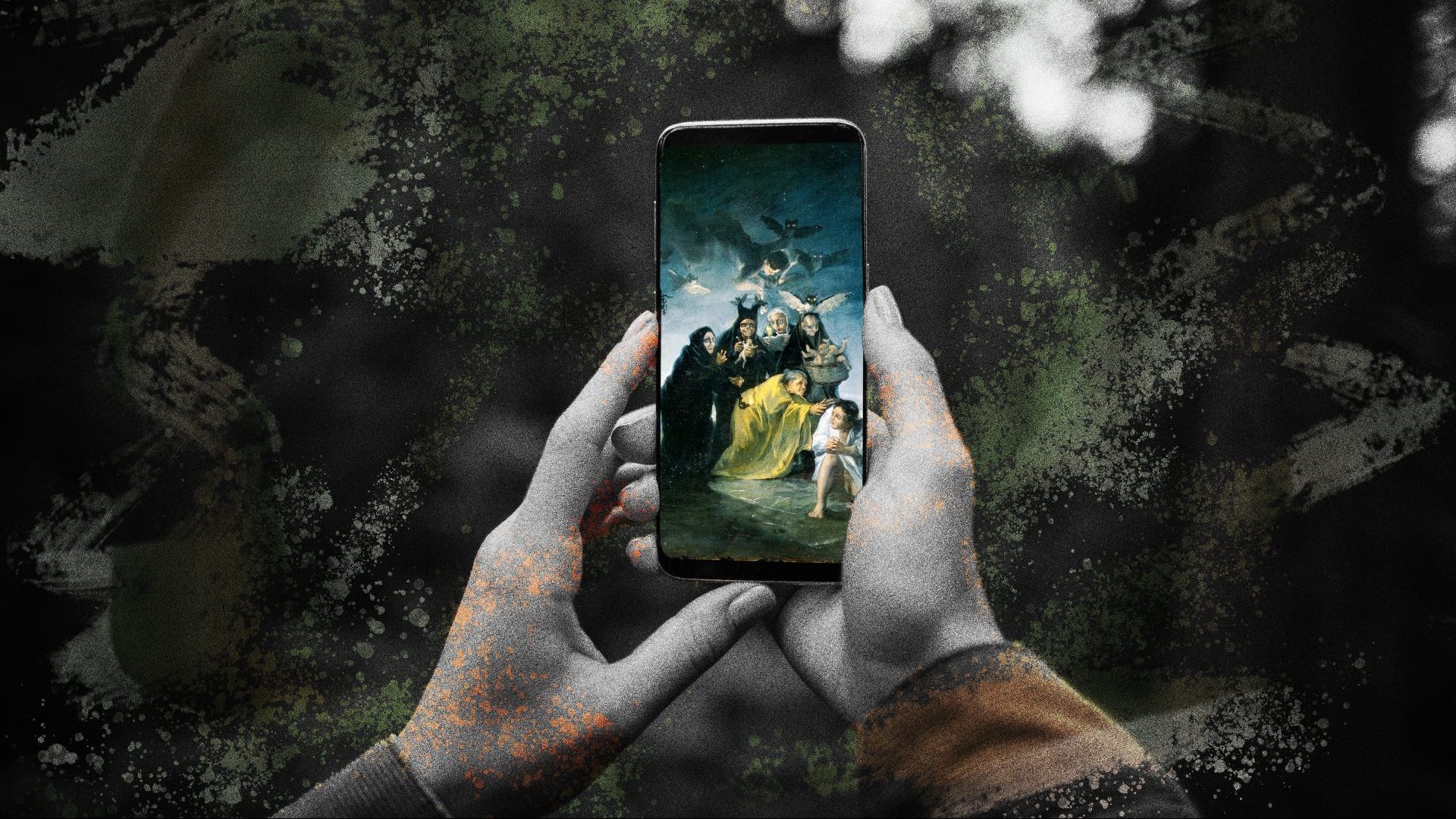Nuclear War is hot again. Christopher Nolan won the Oscar for Oppenheimer, and the Steve Coogan/Armando Iannucci version of Stanley Kubrick’s Dr Strangelove played to packed houses in the West End. On television, dramas are spreading like a mushroom cloud, with Rebecca Ferguson and Tim Robbins in Silo or Walton Goggins’ Fall Out. Annie Jacobson’s non-fiction book Nuclear War: A Scenario has been a bestseller and has just been optioned by Denis Villeneuve, to be made somewhere in between the next James Bond film and another Dune sequel.
The latest addition to the trend is Kathryn Bigelow’s new film A House of Dynamite – her first since the poorly received Detroit was released almost seven years ago. In it, the unimaginable is imagined: a remote radar station picks up the launch of a missile somewhere in the Pacific Ocean. Could it be a mistake? Could we intercept it?
The different layers of civilian and military power are brought into play and the question becomes how to retaliate and what it will mean. Like a Mutually Assured Destruction version of Rashomon, Bigelow and Noah Oppenheim’s screenplay retells the same passage of time from different points of view, but the story doesn’t really change. It is simply different versions of “We’re all going to die” played in different, ever more panicky keys.
It is one of the tensest thrillers of recent years. And it boasts a top-drawer cast with the likes of Ferguson, Idris Elba, Jared Harris, Tracy Letts (fastly becoming one of my favourite character acts/playwrights), Greta Lee and Willa Fitzgerald all looking anxious and playing relatively minor roles, compared to the star of the picture: an ever-approaching blip on a radar screen.
Bigelow began her career with a Willem Dafoe-starring biker movie The Loveless in
1981, before hitting her stride with the cult vampire movie Near Dark and the heist surfer hit Point Break. But with A House of Dynamite, she’s closing a masterful trilogy of American paranoia which began with the Iraq war drama The Hurt Locker, which won her the Oscar. Zero Dark Thirty then took the war on terror to the enemy, tangling itself in the dusty web of torture and misplaced intelligence (in more ways than one) to chart the hunt for and execution of Osama Bin Laden.
Bigelow’s films at their best – and they are often much better than audiences first appreciate (see 1995’s science fiction thriller Strange Days) – inhabit popular genres to bring out some of the more hidden aspects of the politics we’re living through. The Hurt Locker subversively suggests that the horror of war – the trauma, the PTSD – is not quite as strong as the buzz of war.
Bigelow herself is not immune to this buzz. She likes her hardware and in Zero Dark Thirty, there’s a noxious attitude to torture that was criticised by as wide a spectrum as John McCain and Slavoj Žižek.
Bigelow claimed that the film was a semi-documentary and in so doing, forewent the license an artist might claim. Torture techniques brought about zero useful information that led to finding the location of Bin Laden.
The context has changed for Bigelow’s new film. The threat is even more amorphous than it was during the war on terror. Danger could come from North Korea, China, Russia, or the Middle East. Despite Donald Trump having resolved (at his own count) eight wars, there is no disguising a general malaise, a fear that we live in apocalyptic
times.
War in Ukraine is heading into its fourth year, with nuclear power stations regularly in the line of fire. Israeli politicians have openly pondered nuking Gaza. India and Pakistan are going back and forth. Nuclear powers all.
In Bigelow’s film, the generals and bureaucrats are suddenly aghast at how little they’ve prepared for just this eventuality. The president realises that he’s only had roughly 20 minutes of briefing on what would happen if there really was a nuclear launch. He’s spent more time on the details of appointing ambassadors, or the protocol when a Supreme Court judge dies.
As you can’t help but also overlay an additional nightmare over this scenario, recasting it with the present administration. How would Trump act? Or Pete Hegseth? Well, we know what he’d be doing.
In some ways, A House of Dynamite is a West Wing version of the end of times: an alternate, more intelligent and capable government that can live in our imaginations. Bigelow’s cast are deft at creating beautiful moments of terrified tenderness.
Some are distracted by the imminent destruction of themselves and their families: so much so that they might not be able to go on. There’s a beautiful moment when an officer turns to his co-worker and apologises for a row they had that morning. Nothing seems important anymore, and yet everything is important.
A House of Dynamite will hopefully prove to be a talking point and perhaps shift our attention onto the fact that we are now once more in the midst of a stealthy arms race, with the number of nuclear warheads increasing by 0.3% worldwide and Donald Trump increasing the nuclear weapons budget by $1.7 billion this year. The current global nuclear stockpile of 12,000 warheads is still far less than the 70,000-plus that threatened annihilation at the peak of the Cold War in the 1980s, but it is also worth noting that the world is far less stable than it was when the United States and its allies faced off against the Soviet Union in an uneasy but still widely respected detente.
Suggested Reading


Kill, stream, repeat: has our obsession with true crime gone too far?
I have the dubious pleasure of having grown up in the 1980s and along with sniffing glue, Grange Hill and leotards, it was also very definitely the decade of the bomb. This had previously produced intermittent panics – the Cuban missile crisis being the whopper – and been the subject of films such as the aforementioned Dr Strangelove and the rather more serious Henry Fonda-led Fail Safe, which Kubrick successfully pipped to the release post in 1964.
Before that, there had been schlocky sci-fi B-movies related to the atomic threat. In 1959, On the Beach offered a remarkably unsentimental big-budget vision of the aftermath of the war, with Gregory Peck and Ava Gardner waiting for the world to end as radioactive clouds drift towards them.
But the ‘80s were no longer looking the other way. There were government leaflets about what to do if you hear the air attack warning, which itself was then reproduced as the intro to Frankie Goes to Hollywood’s mega-hit Two Tribes. The song’s video – banned by the BBC as too violent – showed Ronald Reagan and Konstantin Chernenko fighting in a sandpit.
Raymond Briggs, author of Father Christmas, Fungus the Bogeyman and The Snowman, also took inspiration from a government safety leaflet to write the graphic novel When the Wind Blows. Although not necessarily, or exclusively a children’s book, my auntie Maureen, a children’s librarian for Barrow-in-Furness Library, made sure we read it. I was ten years old and not quite ready for Briggs’s story of a lovely old couple of pensioners preparing for and then living through a nuclear attack.
But the one artistic response to the nuclear stalemate and the most vivid rendering – for me – of the possibility of a nuclear attack was Mick Jackson’s Threads. The film was written by Barry Hines, who had written the novel Ken Loach’s Kes was based on, and showed the effects of a nuclear bomb on Sheffield.
The choice of a small industrial town rather than London was the first of many decisions which made the film much more relatable. This was something that might happen anywhere in Britain, not simply the capital. The people involved were ordinary people trying to get on with their lives, hardly aware of the international situation being reported on the radio and TV, hoping that, as ever, it would blow over
When the explosion comes in Threads, there are shots seared into my memory, familiar sights rendered nightmarish. A man on a bicycle is on fire in a tree; Woolworths explodes; milk bottles melt on a step; a respectable woman (she looked like my mum) wets herself with fear.
The next day at school, it was all we could talk about. We asked each other seriously what we would do if we heard the three-minute warning.
Nearby Barrow was a shipyard that built nuclear submarines. It would obviously be a target. We all agreed we’d probably try to get as close to ground zero as possible, as the thought of surviving the bomb was too terrifying. We were 12 years old.
In the United States, another TV movie had been shown that had an even larger effect. In fact, Nicolas Meyer’s The Day After has a claim to perhaps being the most consequential TV movie ever broadcast.
Showing the effect of a nuclear war on Kansas City, Missouri, a city in the American heartland, the film was shown a month before it was screened for the then-president in the White House. Ronald Reagan wrote in his diary that “it was very effective and left me greatly depressed.”
The old Hollywood actor turned nuclear tiger saw in the drama the possible consequences of his own policies and would write in his memoirs that The Day After influenced his negotiations with Gorbachev on stopping the arms race.
One can only hope that in a new age of existential threats, the great peacemaker Donald Trump has a Netflix subscription and is watching A House of Dynamite. But, I’m afraid, the days of empathy are over.
A House of Dynamite is streaming on Netflix from October 24
John Bleasdale’s books include Darkness Visible: The Cinema of Jonathan Glazer and The Magic Hours: The Films and Hidden Life of Terrence Malick




